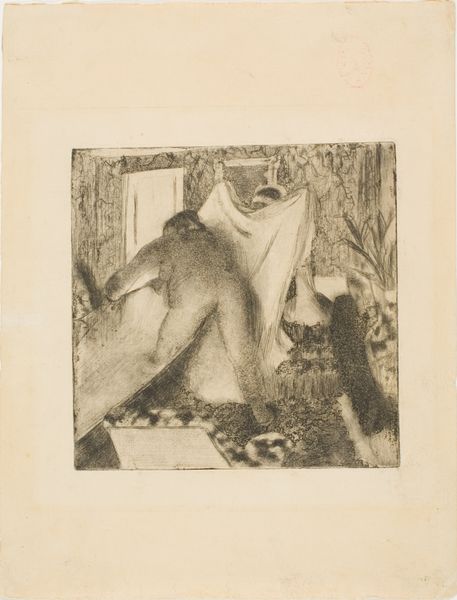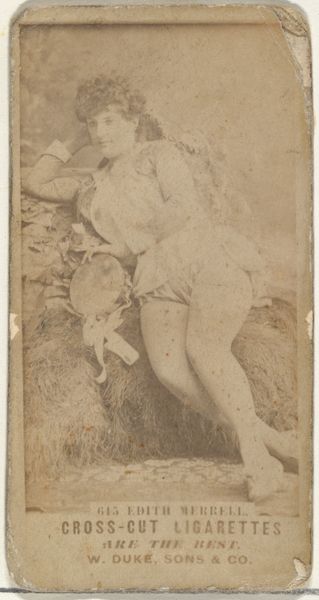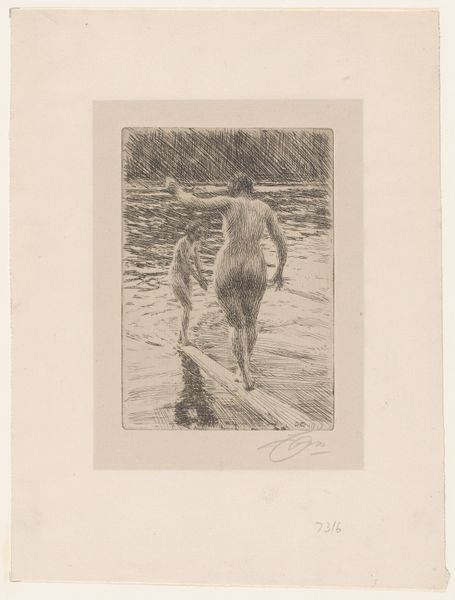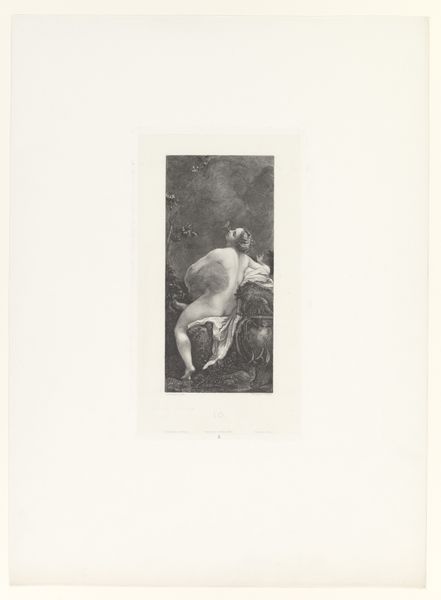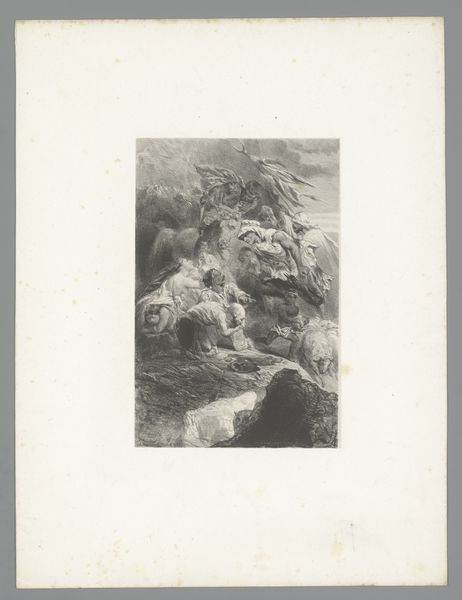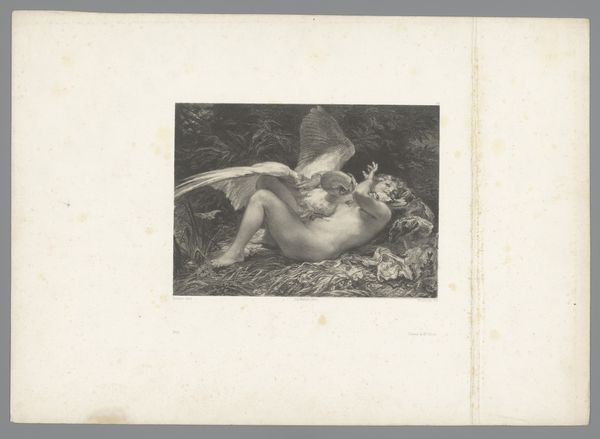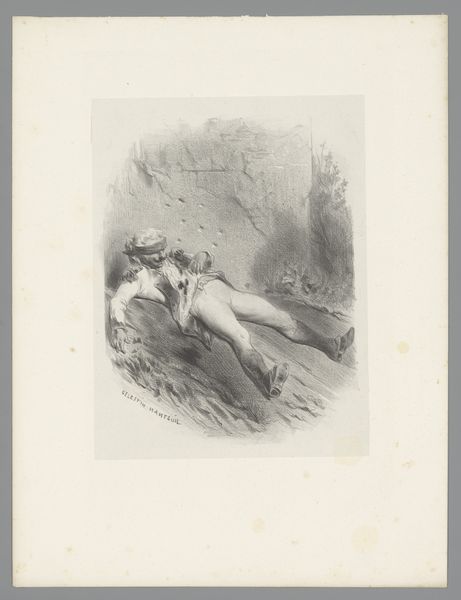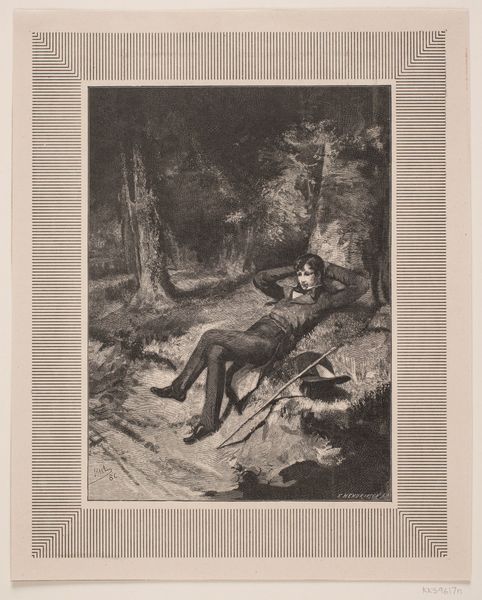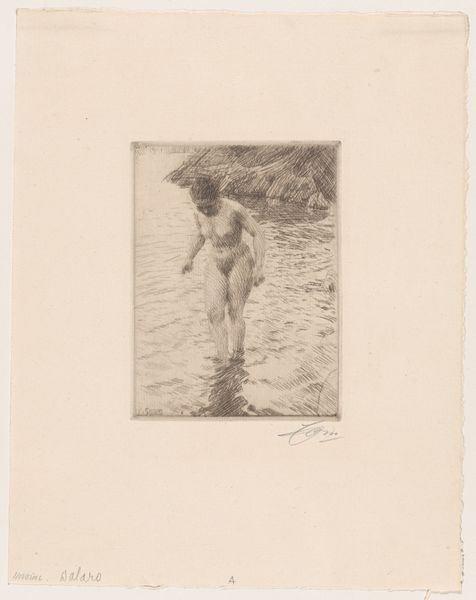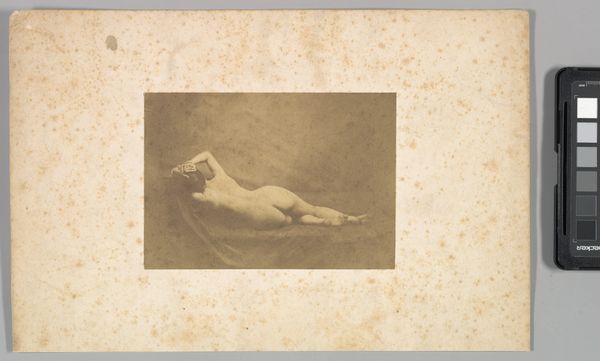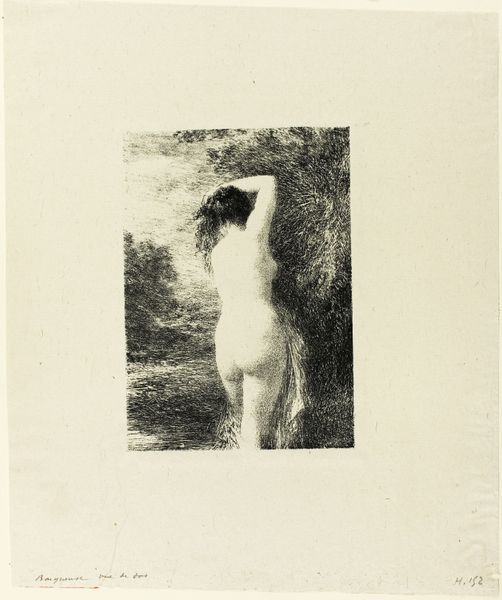
photography, gelatin-silver-print
#
portrait
#
pictorialism
#
landscape
#
photography
#
gelatin-silver-print
#
nude
Dimensions: height 198 mm, width 161 mm
Copyright: Rijks Museum: Open Domain
Editor: Here we have René Le Bègue's "Vrouwelijk naakt op een rots," a gelatin-silver print made before 1896. The soft focus gives the nude figure an almost dreamlike quality against the rugged rocks. It feels both classical and somehow vulnerable. What do you see in this piece? Curator: What I find fascinating here is the intersection of nature, the female form, and photographic technique within its historical context. How does Le Bègue's pictorialist style challenge or reinforce late 19th-century bourgeois attitudes towards the female body? Consider the power dynamics implicit in the male gaze during this period. Editor: So you're saying the romantic presentation of the nude, lying back and vulnerable, perhaps subtly reinforces that patriarchal view? Curator: Precisely. It's crucial to question whether Le Bègue’s artistic choices – the soft focus, the submissive pose – inadvertently perpetuate the objectification of women. Also, the choice of setting; does it offer the woman power from being associated with nature or simply frame her body to be on display, or a combination of both? It invites a nuanced dialogue. Does that perspective resonate? Editor: It does, because on one hand it can seem as if the figure owns the space, like a nymph of sorts. But I understand the risk of romanticizing that vulnerability in the way you’re suggesting. Curator: And that friction, that push and pull between possible readings, is exactly where the work sparks necessary conversations about representation and power. What's your feeling, now? Editor: That tension makes me consider the artist’s intention and how far removed we are from that initial view of beauty. Thank you for helping me see past my initial impression and look at the historical context. Curator: Indeed! That nuanced analysis, bridging art history with feminist thought, enriches our understanding of both the artwork and the broader social landscape. It reveals so much about then, and even now.
Comments
No comments
Be the first to comment and join the conversation on the ultimate creative platform.
